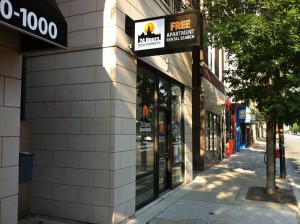Written by: Brandon Turner, Bigger Pockets
From: http://www.businessinsider.com/dont-commit-these-seven-deadly-sins-of-real-estate-investing-2012-9
No, I’m not referring to gluttony, wrath, or sloth. I’m talking about the Seven Deadly Sins of Real Estate Investing.
Ok, maybe they aren’t physically deadly – but they are possibly catastrophic to your business.
If you are concerned about the health of your investments, make sure to steer clear from these seven sins:
1. Buying Based On Future Value
Also known as “pro forma” numbers, many investors buy property based on what it “could” be worth, not what it is worth. Real estate agents are especially known for emphasizing the future possible value (they are the eternal optimists) but neglecting the facts on the ground. Make sure you don’t fall victim to this sin and always know exactly what the current value is and don’t buy anything for what could be.
2. Blindly Following A Guru
Real estate investing is not a system. Anytime I see that phrase I cringe just a little bit. The typical real estate guru would have you believe that by simply following a step-by-step system you can make millions in real estate. Millions can be made, but its not by following a system – it’s from following your brain. Investing is about solving problems, and if your “system” is unable to account for flexibility or challenges – your dead in the water.
3. Being Unrealistic With the Math
The one deadly sin nearly every investor has made is not being realistic with the math. Whether overestimating future value, underestimating the repair costs on a project, or simply not taking the time to actually do the numbers- poor math will destroy an investment.
4. Relaxing on the Record Keeping
For many investors, “record keeping” is nothing more than an attic full of vintage Barry Manilow albums (get it? “record keeping”… no? Okay, easy – I’m an investor, not a stand up comedian!) If you don’t know the health of your investments – how can you make informed decisions for the future of your investments? By keeping adequate records and staying up-to-date with your finances, you position yourself to know exactly how well your investments are performing while also ensuring the long-term stability of your investment plan. Additionally, keeping good records makes tax time a breeze as well as simplifying the process when applying for a loan. For more information on record keeping for investors, check out Arthur’s post on record keeping.
5. Confusing Investing with Gambling
Do you invest or do you gamble? Do you even know the difference? Buying something with the hopes that it may someday bring a profit is gambling (or speculating). Flipping, building spec homes, and investing in raw land often resemble gambling much closer than investing. Notice I didn’t say that gambling was one of the Seven Deadly Sins of Real Estate Investing. The sin is not in gambling, but in confusing the two. Each strategy requires a different skill set and different financial resources. Be sure of what you are trying to accomplish and make sure you have the tools necessary.
6. Over Leveraging Yourself
Perhaps the most common real estate sin over the first decade of this century, over leveraging is the act of carrying too much debt than what the properties can maintain. If you are financing everything to the point that there is no cashflow, it is very difficult to weather the storms when they rise up. Just ask the thousands of bankrupt investors who learned this lesson the hard way.
7. Getting Bored and Getting Fancy
The path to wealth through real estate investing is not difficult, but it also isn’t super fast. In an earlier post on BiggerPockets, I mentioned how real estate investing was like playing a game of Super Mario Bros. The game is fairly simple and straightforward, thus easy to master. The difficulty, however, is that once the system has been mastered it is easy to get bored and decide to get fancy. Many investors know that wealth and retirement can be created using real estate, but get bored and try to hurry the process up by speculating and buying deals that don’t fit their plan. This is a sure-fire way to lose most or all of one’s wealth. Remember, it can take years to build up a solid retirement portfolio but only one stupid mistake to lose it all.





